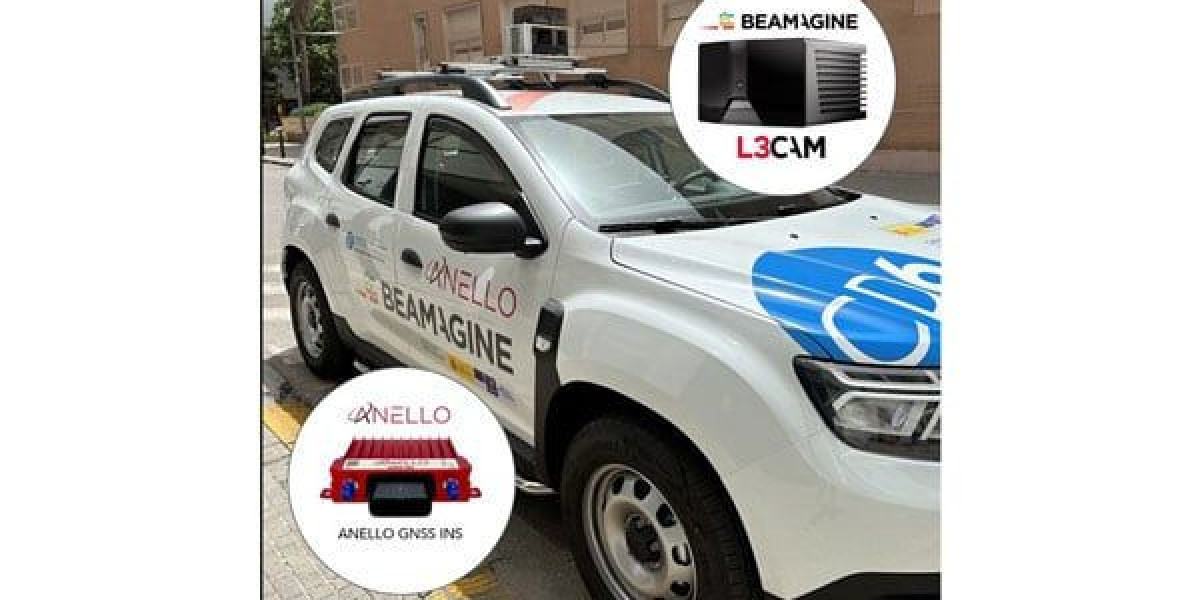Rail systems are undergoing a transformation. The way trains are operated and monitored and how safely they interact with their surroundings have changed due to innovations in automation and sensing. At Beamagine, the change is being driven forward with the new 3D imaging and sensor fusion technologies bridging the gap between traditional railway infrastructure and future-ready intelligence.
Let’s analyze how LiDAR and other related systems are optimizing railway functions.
- Real-Time Visibility For Maximized Safety
Reliable, real-time awareness of everything happening along the track is critical for railway safety. Ranging from obstacle detection, checking the condition of the tracks, and monitoring the crossings, faster detection is critical.
At Beamagine, we have solutions for this problem. We specialize in advanced 3D perception systems that fuse together LiDAR, imaging, and custom optics to build a comprehensive picture of the rail environment in real-time. Railway infrastructure operators can now:
- Automatically detect objects or obstructions ahead of moving trains.
- Conduct monitoring of rail infrastructure for damage or wear.
- Detect nearby personnel, vehicles in yards, or vehicles at stations.
Enhanced visibility grants the ability for self-automation and enables early warning and faster response, increasing the chances of reducing or preventing accidents and disruptions.
- The Advantages of LiDAR Over Traditional Techniques
Railways are always equipped with an array of cameras and radars for safety purposes. However, these technologies do have some shortcomings. Limited visibility, harsh weather, and an absence of depth data can reduce their reliability. The rail industry is now poised to benefit from enhanced precision brought by LiDAR Autonomous Vehicles.
Unlike passive systems, LiDAR actively scans its surroundings using laser pulses, generating 3D point cloud data with precision, whether it is dark or dense fog. This ensures more reliable detection of:
- Vegetation or debris along the track.
- Unexpected pedestrians or vehicles at crossings.
- Changes in infrastructure alignment or position.
These benefits are also extended to LiDAR Autonomous Vehicles, allowing railways to improve both autonomous and manned train systems to fully exploit this depth perception technology.
- Advanced Train Detection Sensors for Smarter Rail Management
Another significant use is improving train relative positioning and tracking across networks. Our proprietary solutions feature custom highly defined Train Detection Sensors that:
- Identify the presence of the train in the station, depot, and maintenance area.
- Monitor the motion and direction of the train along several tracks.
- Automated control of rail traffic in complex rail hubs.
These sensors can be implemented with control and signal devices for signal and route control optimization and to reduce the risk of collision.
With streaming real-time data, train detection sensors facilitate operators’ shift towards predictive maintenance and dynamic traffic control, which help improve the resilience and efficiency of the rail network.
- Improving Operational Efficiency with Intelligent Insights
As mentioned before, speed is not the only factor that defines efficiency; coordination is equally important. Efficient train traffic control depends significantly on knowing where the trains are and their speed and ensuring on-time performance. All of these factors contribute to avoiding bottlenecks and ensuring punctuality.
The technologies provided enhance:
- Real-time asset monitoring and fleet tracking.
- High-resolution 3D data-based automated inspections.
- Smart analytics for scheduling and route optimization.
With Beamagine’s customizable perception systems, operators can make timely decisions, reducing delays and energy consumption. Unnecessary delays, energy usage, and resource usage are greatly reduced.
- Supporting Next-Gen Rail Applications
What does the future of railway transportation look like? It’s already taking shape in the form of automated trains, remote operations, and LIDAR Autonomous Vehicles integrated with national and regional rail systems.
This change is being driven by Beamagine. Our multi-modal sensor fusion platforms provide synergy between LiDAR, cameras, and AI. This allows for:
- Enhanced autonomous rail systems for mining, logistics, and urban shuttles.
- Decision-making in real-time for increased safety, automatic navigation, and obstacle avoidance.
- Substantially reduced environmental impact, resulting in safer and more sustainable environmentally friendly rail solutions.
The possibilities for LIDAR autonomous vehicles continue to expand in relation to rail systems, ranging from freight trains to smart metro systems, in the future.
- Designed for Adaptability: Beamagine’s Edge
What makes Beamagine unique? We don’t provide generic sensors. Our approach revolves around full solution designing. Our service list includes:
- Cross-discipline sensing systems designed for specific rail environments.
- Compact, rugged hardware equipment for onboard or trackside installation.
- Custom optics and scanning mechanisms for long-range sighting in addition to high-detail inspections.
- AI-driven scene interpretation software for perception in real-time.
These systems may be fitted to current frameworks or configured for greenfield developments. Whether it is a need for train detection sensors at a busy railway station or a 3D vision system for autonomous freight trains, we have solutions.








